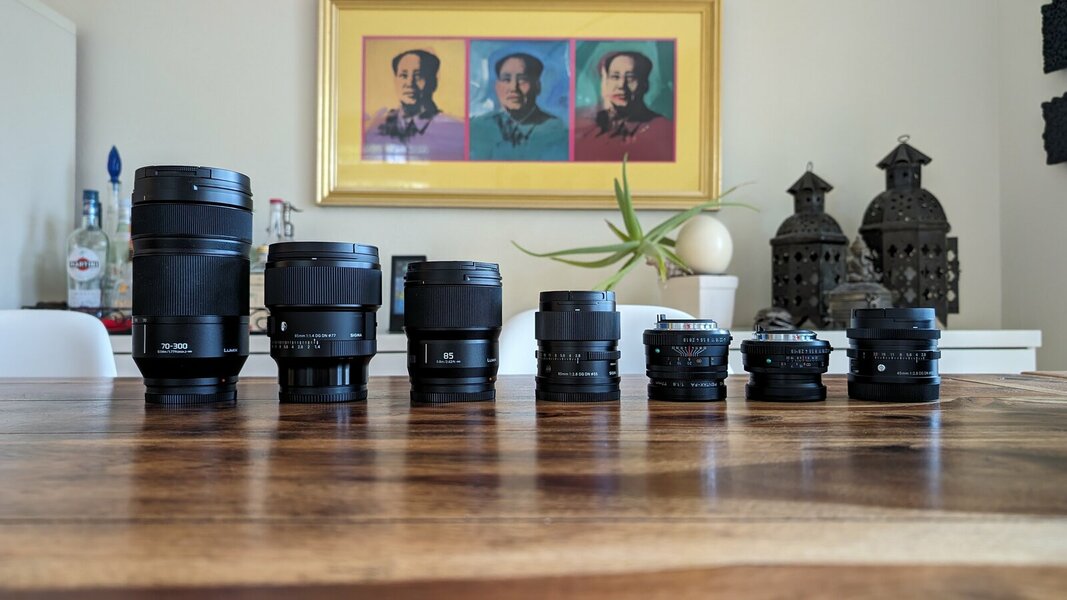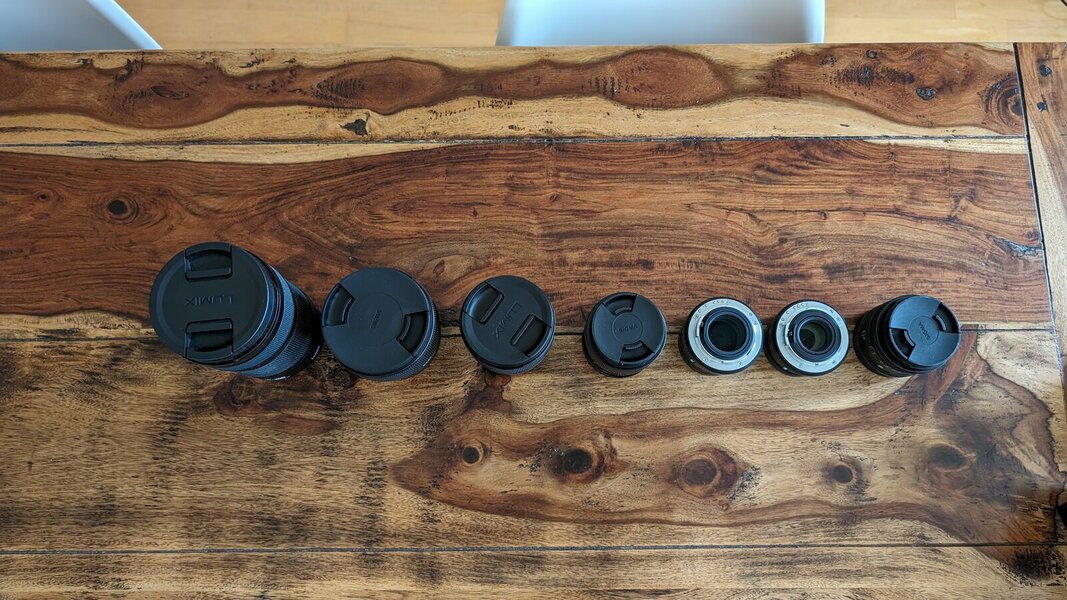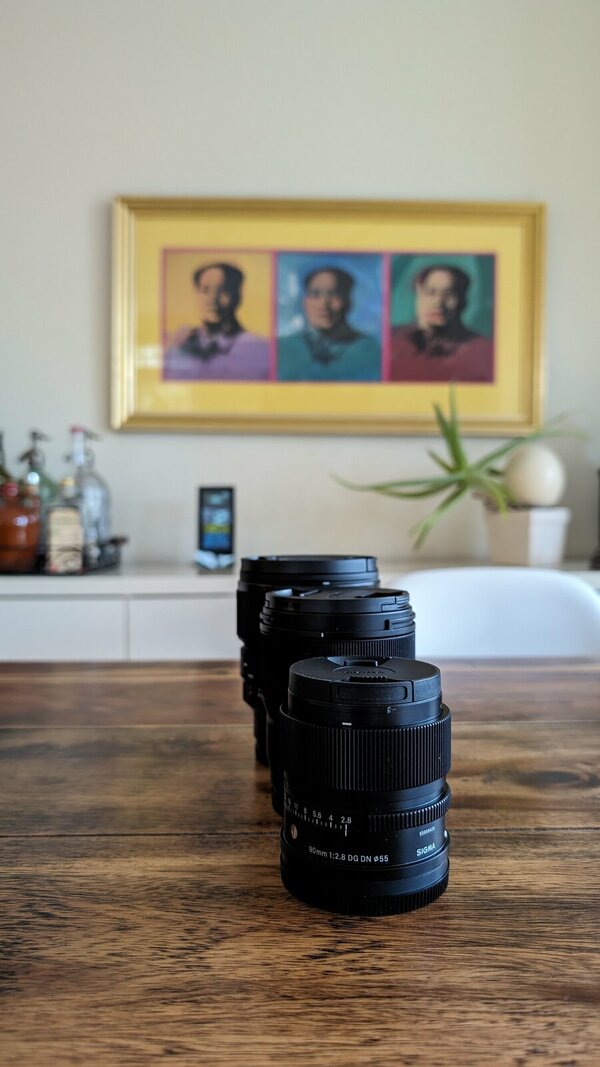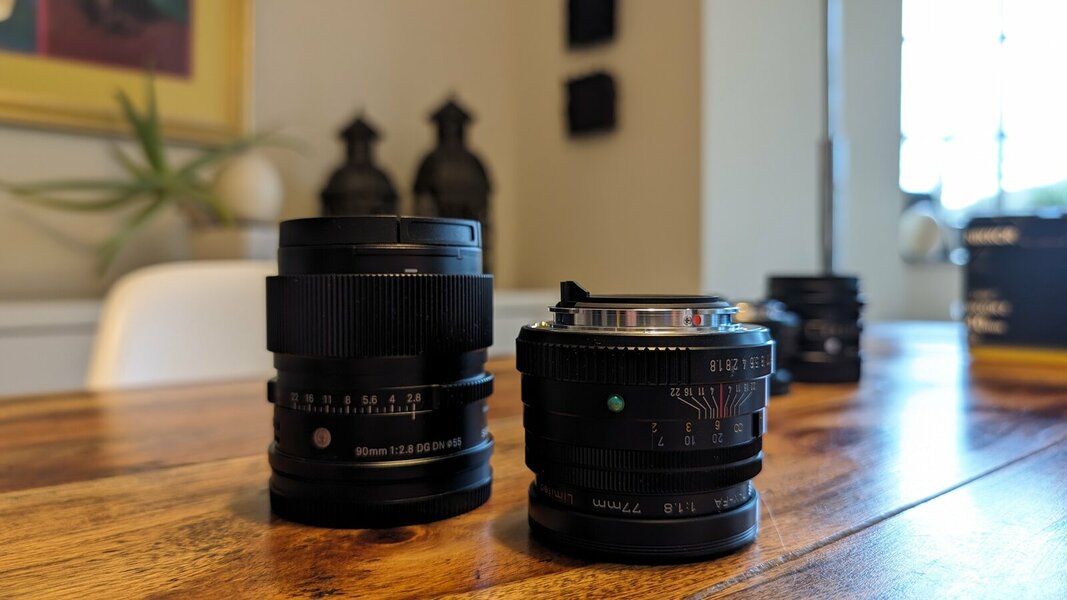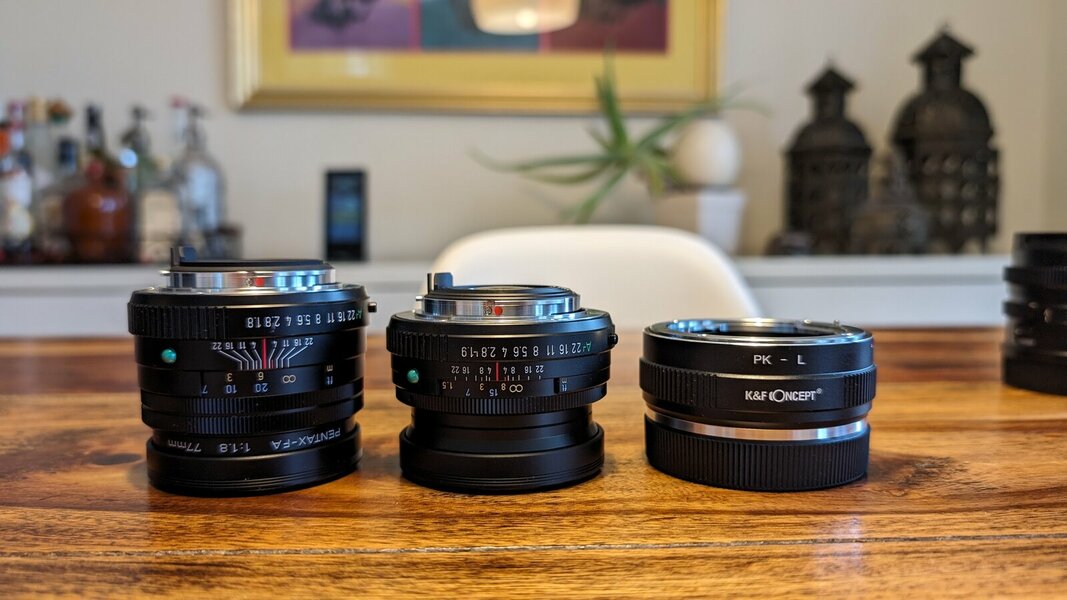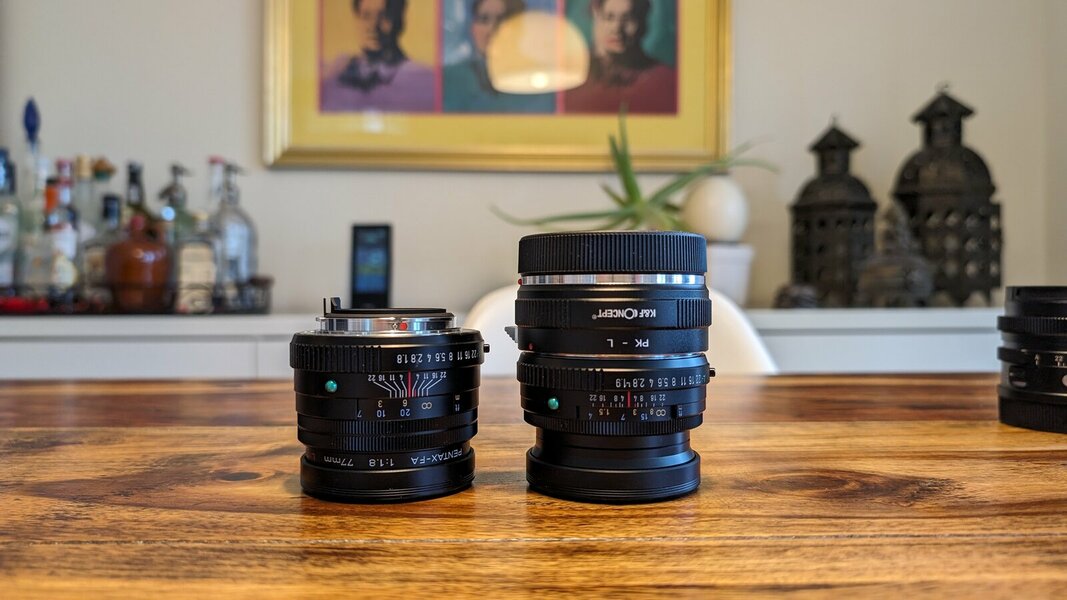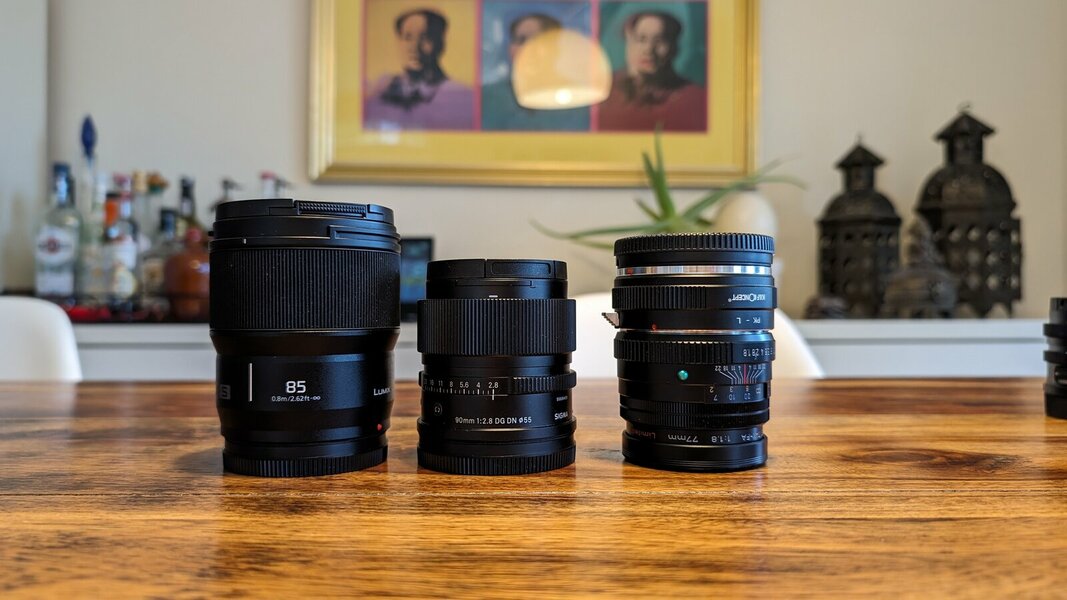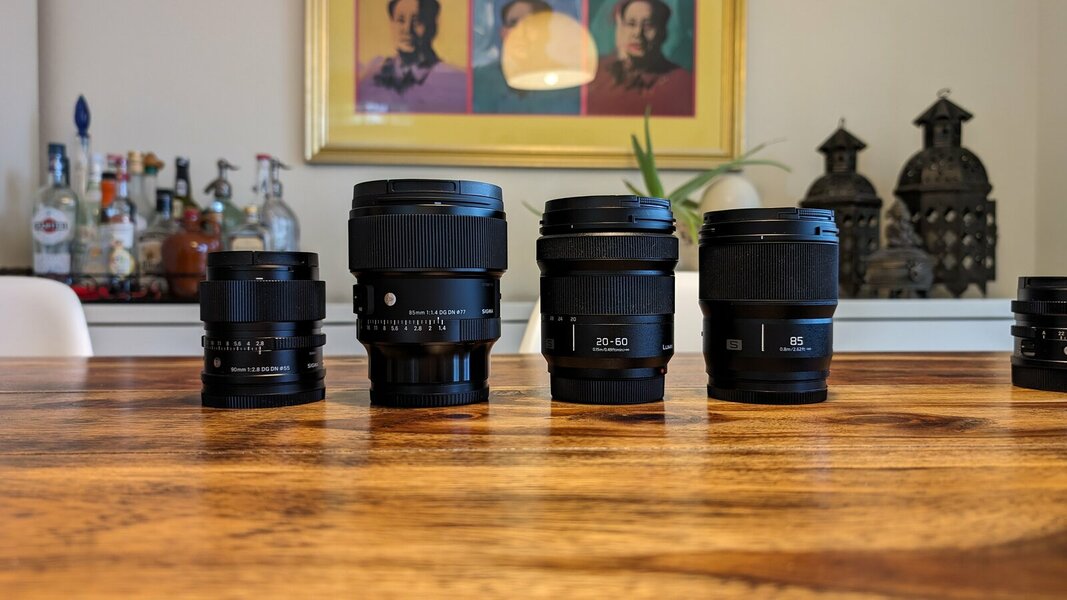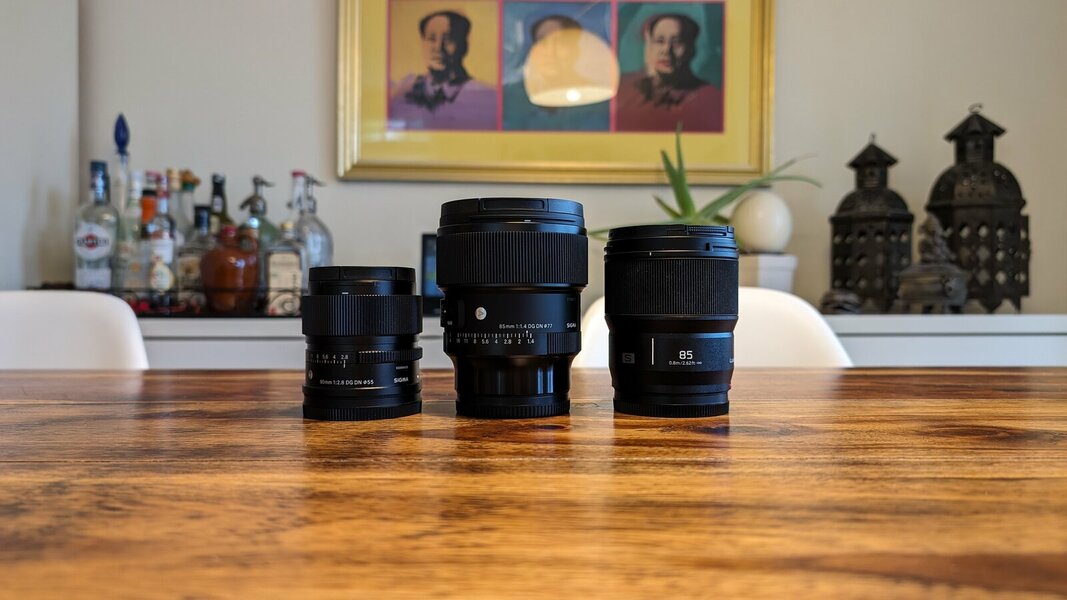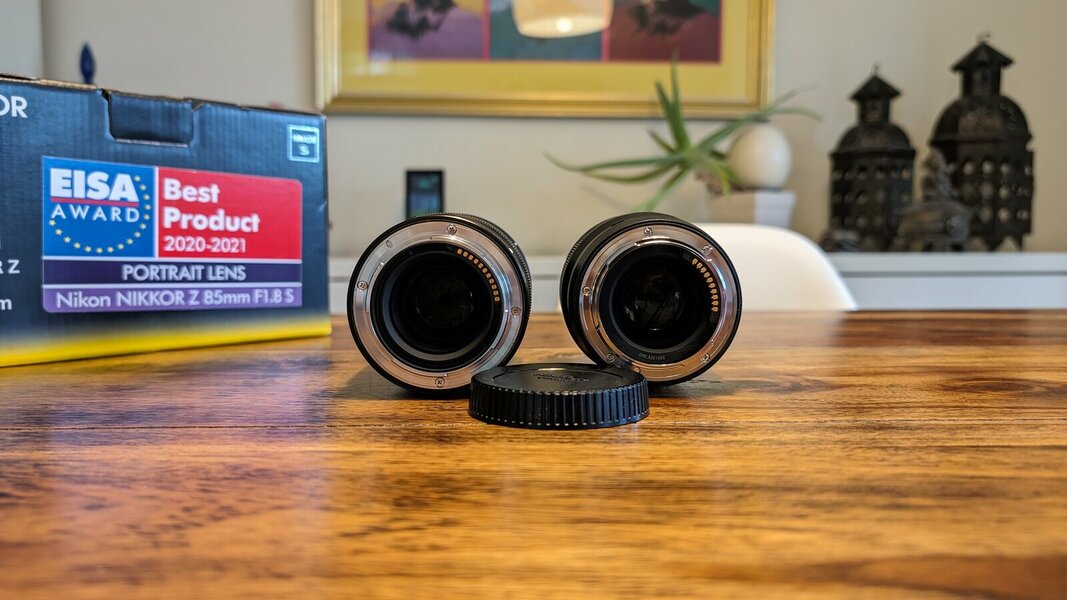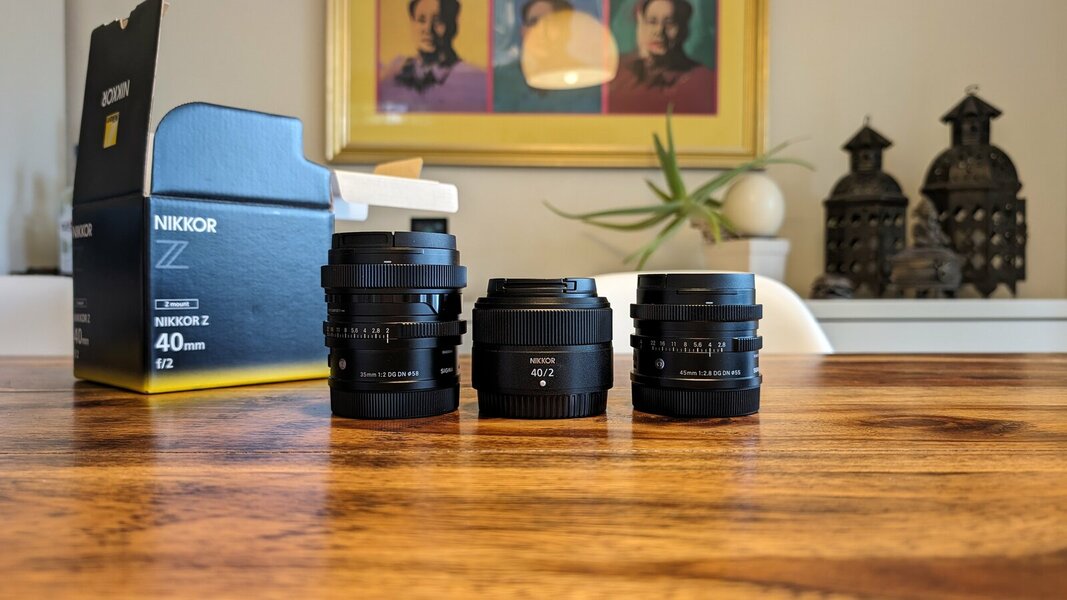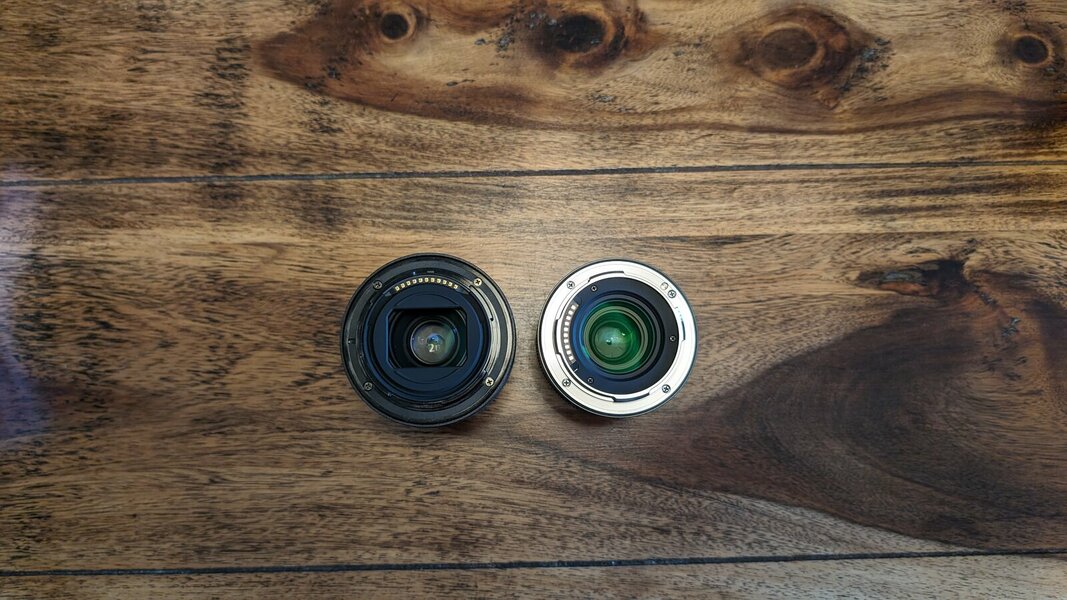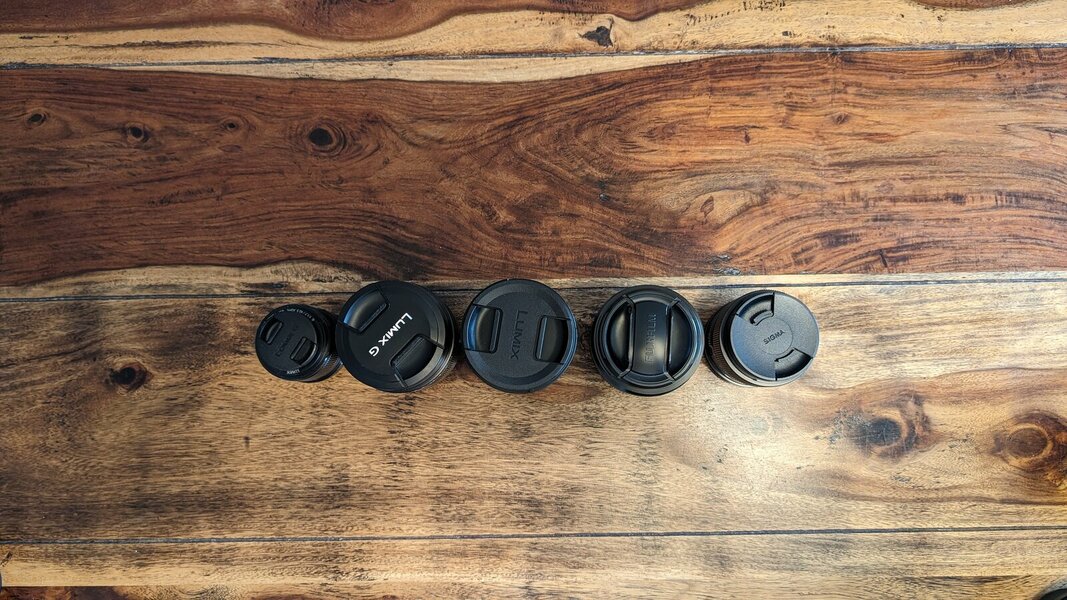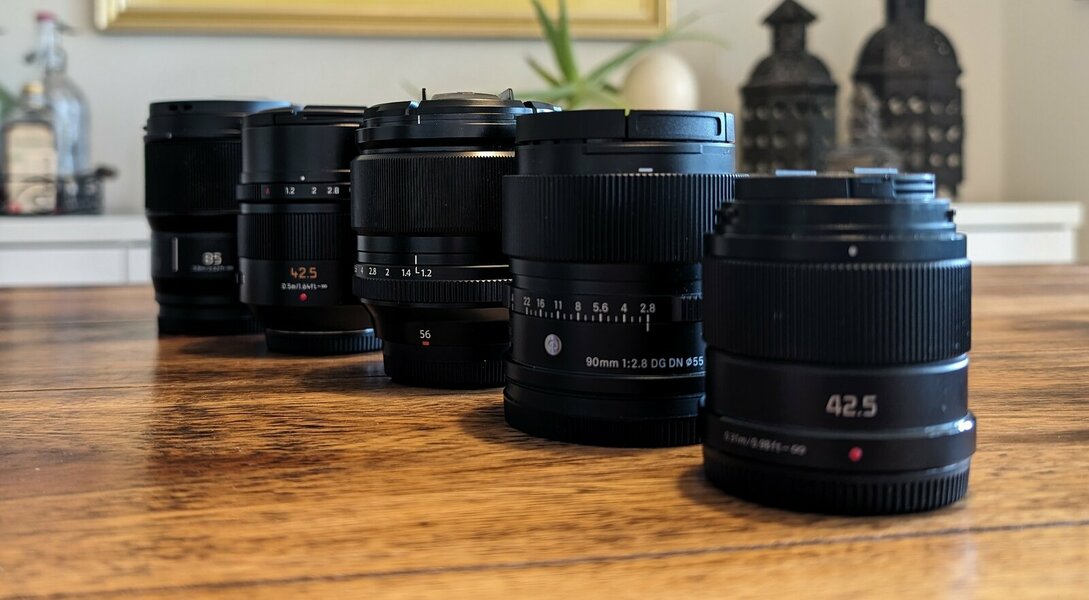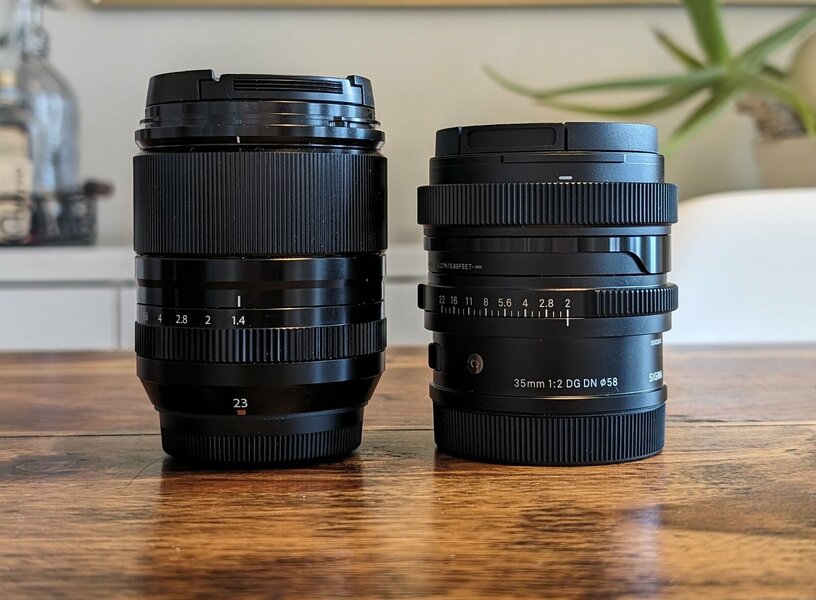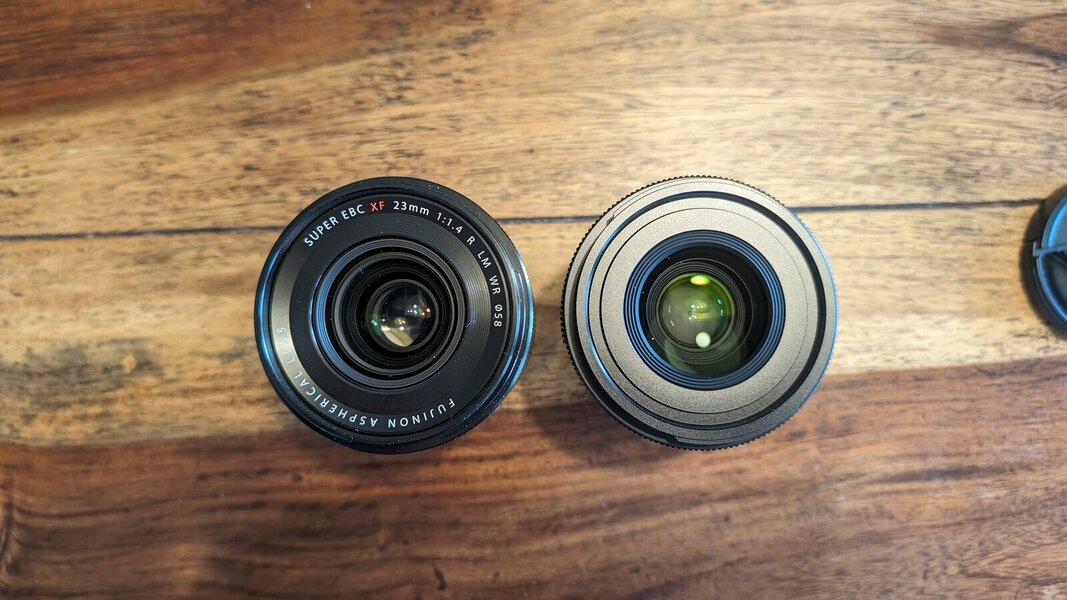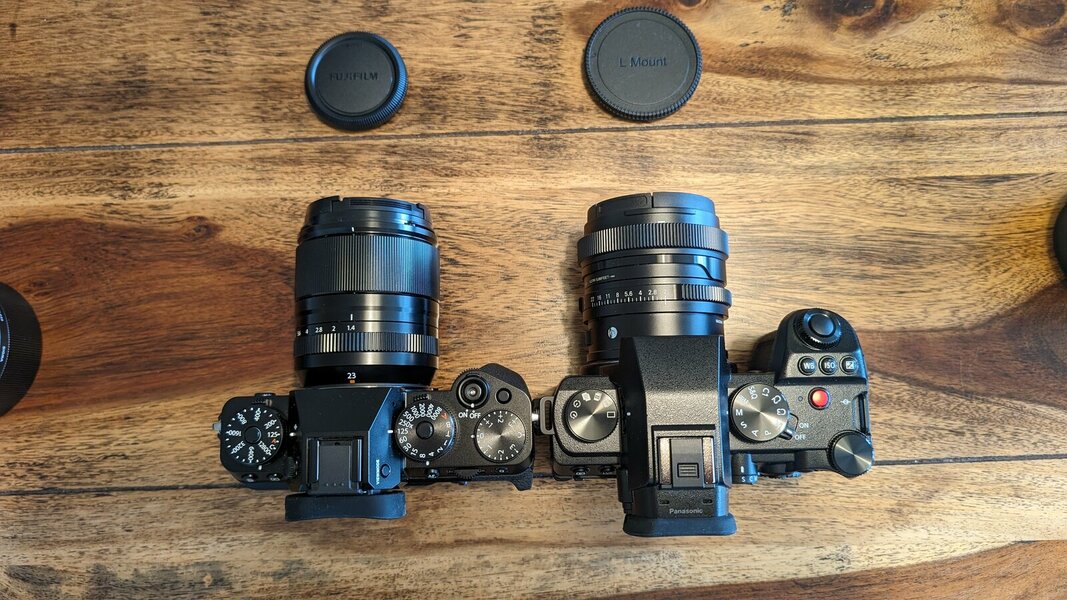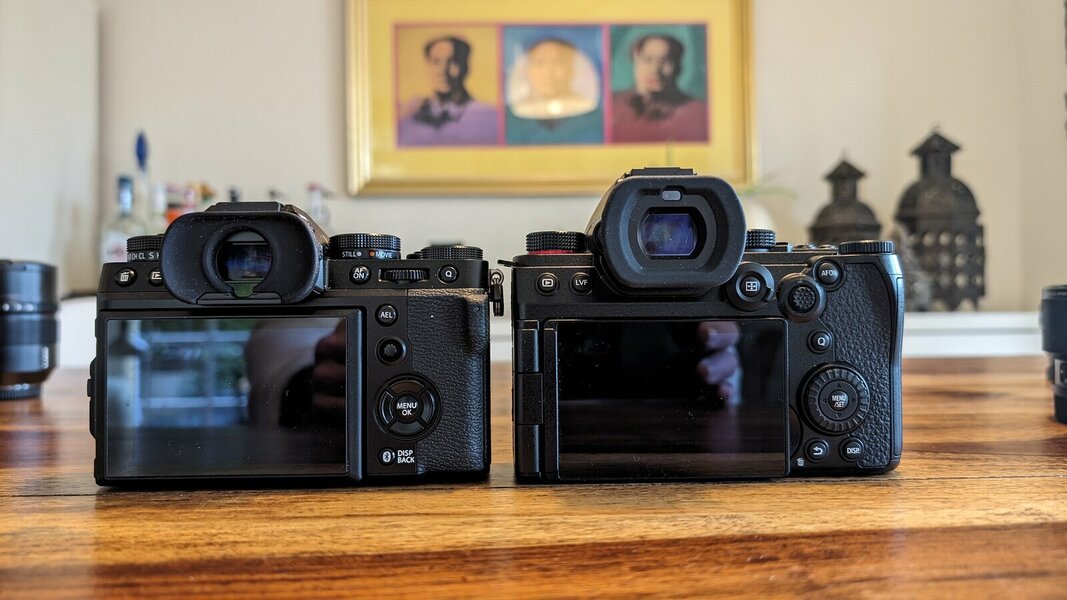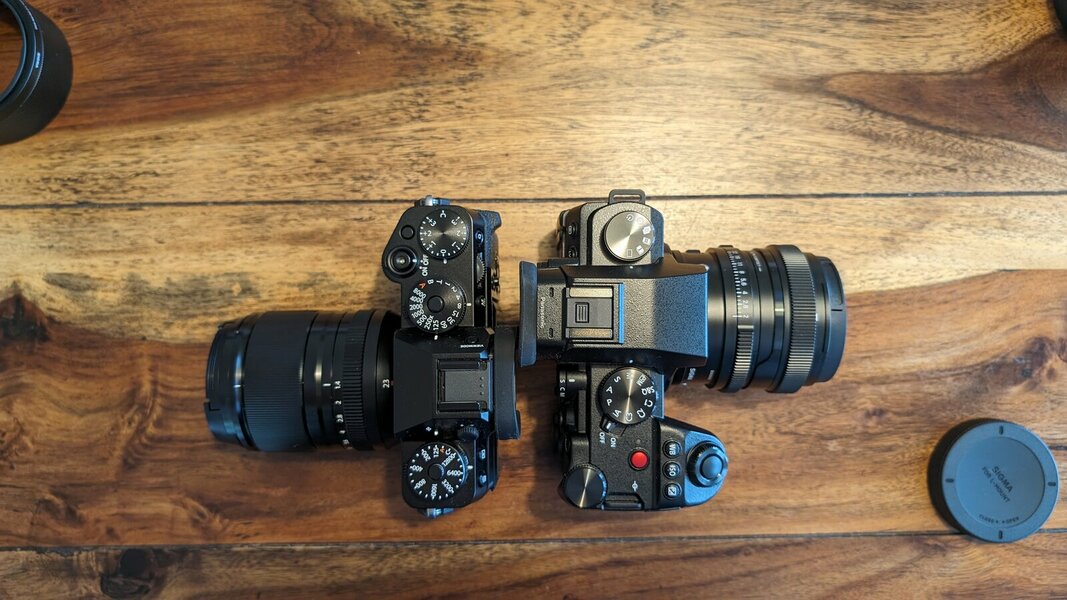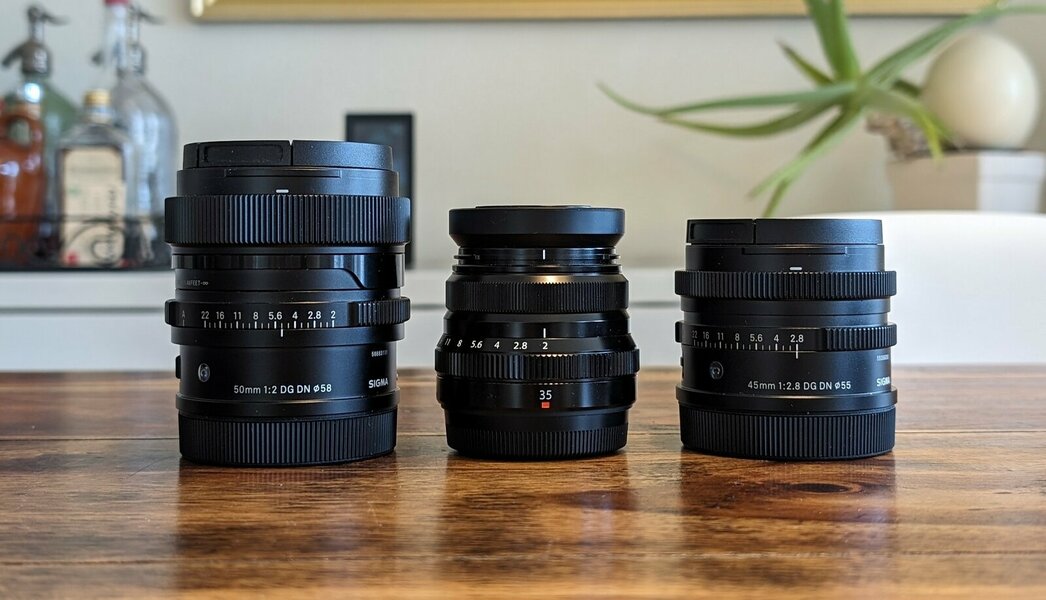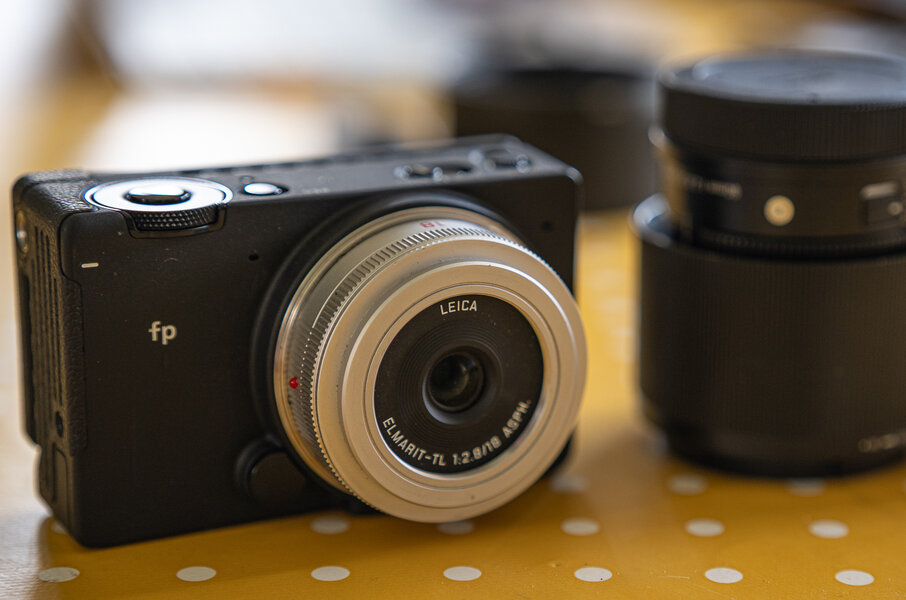Some members asked for photos of and with the different short tele lenses I own, to be able to compare them for your individual needs. Camera stores seldom have everything in the shop at the same time, if there is at all a camera shop in your neighborhood.
The weather here is really bad to take good Images. It is raining since a week and it is overcloud all the time. This will not change over the next days. I decided to start this thread nevertheless with product images already. This will help already some members as an indication whether a lens is too big or not for them.
Size and weight is for me always a big deciding factor.
I will upload more and more images over the time. I will do comparison shots outdoors (nothing scientific) with the following 5 lenses:
Since I sell my last Nikon Z system lenses I will post also product photos to compare the size and lens mount with the L-Mount lenses. I sold already last year all my Nikon Z cameras, so I can not compare directly the image quality anymore.
Obviously I did not find a quality difference in favor of the Nikon Z lenses, otherwise I would not have switched from Nikon Z to L-Mount
The weather here is really bad to take good Images. It is raining since a week and it is overcloud all the time. This will not change over the next days. I decided to start this thread nevertheless with product images already. This will help already some members as an indication whether a lens is too big or not for them.
Size and weight is for me always a big deciding factor.
I will upload more and more images over the time. I will do comparison shots outdoors (nothing scientific) with the following 5 lenses:
- Lumix 70-300
- Lumix 85/1.8
- Sigma 85/1.4 DG DN
- Sigma 90/2.8
- Pentax HD FA 77/1.8 limited edition (with adapter)
Since I sell my last Nikon Z system lenses I will post also product photos to compare the size and lens mount with the L-Mount lenses. I sold already last year all my Nikon Z cameras, so I can not compare directly the image quality anymore.
Obviously I did not find a quality difference in favor of the Nikon Z lenses, otherwise I would not have switched from Nikon Z to L-Mount
Last edited:
